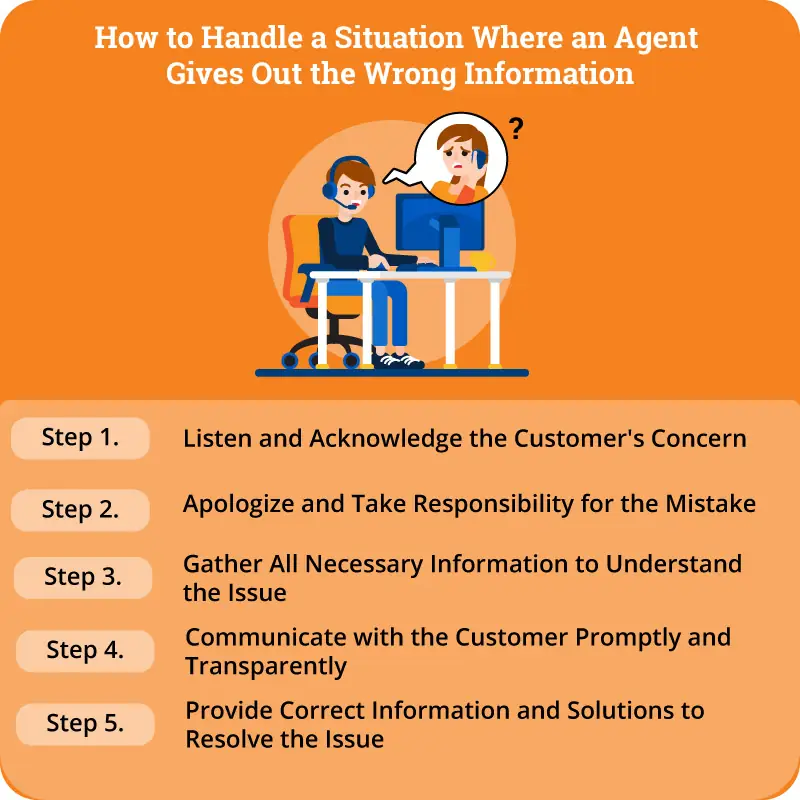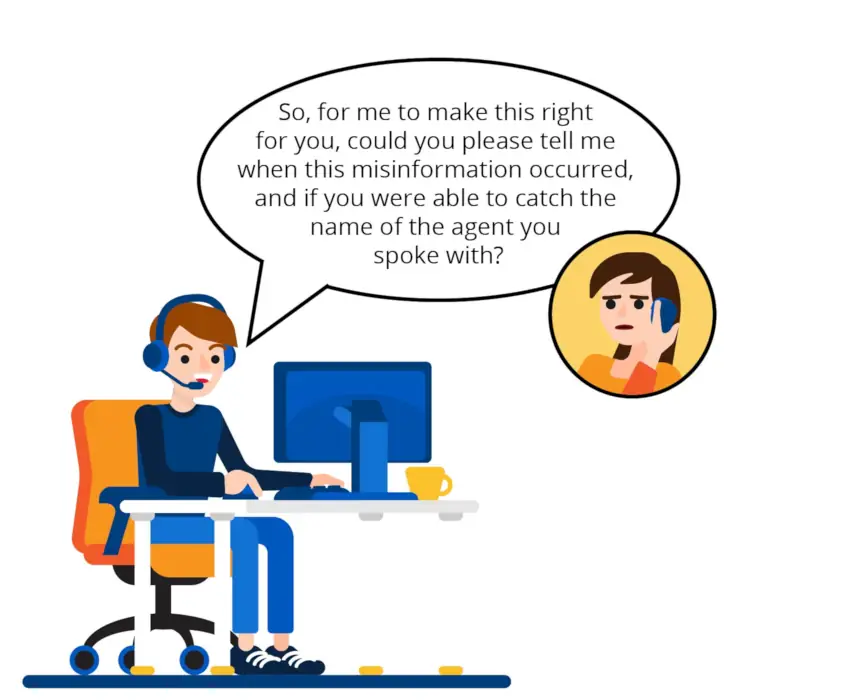Call center agents have the critical job of solving customer issues, answering queries, and providing essential information. Their role is monumental, for every piece of information they give out plays a direct role in Customer satisfaction (Csat). However, call center agents will give out the wrong information, causing a ripple effect that could potentially damage the company's image, and that's what we intend to address through this blog.
What Is the Importance of Customer Support in Call Centers?
Call center agents act as the torch bearers, leading customers through the labyrinth of a business organization. In most cases, they are the last line of defense to customer service because they offer immediate assistance, are the only employees available for a customer to discuss their issues or problems, and can provide personalization and empathy, which are especially valuable when addressing frustrated or emotional customers.
Call center agents:
- Deal directly with customers, understanding their needs, expectations, and pain points.
- Represent the face and voice of your organization.
- Directly influence customer satisfaction and retention rates.
What Is the Impact of Wrong Information on Customer Satisfaction?
When a call center agent inadvertently gives incorrect information, it negatively impacts customer satisfaction. Customers rely on accurate, timely information to make their decisions, and when trust is breached, it tends to reflect poorly on the brand's reliability and credibility.
An agent providing wrong advice disrupts the service and can lead to mismanaged expectations, damage customer relationships, and ultimately result in customer defections. This is why quickly and effectively addressing and recovering from such mistakes is crucial.
For the customer, wrong information can lead to confusion, wasted time, and frustration. In extreme cases, it might lead to losing trust and loyalty toward a company. For the business, the implications can include negative reviews, lost sales, or a damaged reputation. Managing customer expectations and ensuring customer satisfaction should be a focal point for any support process.
What are Common Reasons for Agents to Give Out the Wrong Information?
Several factors could contribute to a call center agent providing incorrect details. Here are the most common ones:
- Insufficient training: Often, incorrect information stems from inadequate training or lack of knowledge about a specific product or service.
- Miscommunication: Sometimes, an agent may misunderstand a question or the information they need to relay, leading to misinformation.
- High call volume: High call traffic might also lead to mistakes as agents may be hurried to end one call and take another.
- System errors: Errors in the knowledge base or CRM the agents use may also lead to wrong information being relayed.
How to Handle a Situation Where an Agent Gives Out the Wrong Information
Managing customer dissatisfactions that arise due to misinformation given by a call center agent is pivotal to maintaining customer loyalty. With the right steps, it's entirely feasible to salvage trust and remedy any confusion caused.
Let's use the example where a customer calls a retailer call center to inquire about the package they should have received by now. The agent is rushed because they have many calls waiting on the line, so they tell the customer that the package is on the way, but they miss the side note in the system that says, "Credit card payment did not go through – this package is pending."
Here are five practical steps to handle such a situation:

Step 1: Listen and Acknowledge the Customer's Concern
The first thing to do when discovering a call center agent has given incorrect information is to listen. Ensure the customer knows that their concerns are heard and understood. It's essential for future communications that they believe you genuinely understand their distress. Show empathy and patience and reiterate what you understand about their situation to confirm accuracy.
For example, when the customer calls back because they still haven't received their package, the call center agent could say:
"I understand that you should have received your package a week ago, and when you called a few days ago, you were given the wrong information and told that your package was on the way. I completely understand your frustration, I'd feel the same way if I were you." Better yet, if QA discovers the issue of wrong information, be proactive in calling customers to provide them with the accurate information required.

Step 2: Apologize and Take Responsibility for the Mistake
Next, apologize sincerely to the customer. Never shy away from this step, as it shows the customer that you take responsibility and can be trusted to rectify the situation.
For example, the agent could say:
"I am so sorry that this happened, and I will do my best to make this right."
"This was an error on our end, and I truly apologize for the inconvenience it has caused you."

Step 3: Gather All Necessary Information to Understand the Issue
Once the situation has been acknowledged and the customer knows you're on their side, it's time to dive deeper. Gather all relevant information about the misinformation and how it has affected the customer. This might include details about the initial call, the identity of the agent involved, and the subsequent actions based on the misinformation.
For example, the agent says, "So, to make this right for you, let me review your past calls and file and confirm that I have the details correct. Does that work for you? I will also follow up with that agent and ensure this type of error doesn't happen again."

Step 4: Communicate with the Customer Promptly and Transparently
After gathering the necessary information, it's crucial to maintain open communication with the customer throughout the resolution process. Make sure to update them periodically and ensure they are aware of each step taken to correct the mistake. This step bolsters their trust in your actions and helps keep their expectations managed.
For example, the agent could say, "I found the information for the last call you made when you received the wrong information. I am making a note in the system so that follow-up action can be taken."

Step 5: Provide Correct Information and Solutions to Resolve the Issue
Finally, provide the customer with the correct information, replacing the previously provided incorrect details. In addition, tailor a potential solution to their specific situation. Compensation or other means of account rectification can go a long way in recovering from the mistake and satisfying the customer. Clear information and one or more possible resolutions should help restore confidence in your customer support and ultimately lead to a resolution that satisfies the customer.
For example, the agent could help resolve the situation by saying, "To try and make up for this situation, I will cancel all charges to your credit card and ship this package to you with our fastest shipping option. You should receive this package within the next two business days. Again, I am so sorry for the hassle this has caused you."

How to Prevent Future Occurrences of Incorrect Information
One fundamental way to recover from a call center agent's error is to prevent such mistakes from happening again. Your customer service department's reputation depends heavily on the consistency of the information provided. Let's look at some of the strategies that can be employed to avoid the recurrence of incorrect information being relayed to customers.
1. Enhance Agent Training and Knowledge Base
Call center agents should undergo in-depth training before they interact with customers. This includes familiarizing them with your company's products or services, policies, and communication etiquette. Additionally, continuous training and refreshers on new updates and changes should be a constant in your organization.
Here are some ideas:
- Interactive training sessions: Encourage your agents to ask questions and think critically.
- Role-play scenarios: Have your agents act out scenarios where one agent plays the customer, and the other plays the agent.
- Quizzes to test understanding: After providing your agents with information, use quizzes or games to make sure they understand.
2. Implement Quality Monitoring and Feedback Systems
Measurement is crucial in maintaining quality customer support. Implementing monitoring and quality assurance systems will provide insights into the agent's performance and interactions with customers.
- Regularly record and evaluate calls.
- Provide timely and constructive feedback.
- Conduct performance reviews to identify areas of improvement.
mySQM™ QA Software is a single quality assurance platform for call centers to monitor, motivate, and manage agents to improve customer experience while reducing QA costs by 50%, which leads to an ROI of 450% and a payback of less than 3 months.
mySQM™ QA Software combines post-call surveys, call handling, and compliance data into a single QA software platform. Combining these data sources gives call centers a holistic and transparent score for your most important metrics, such as Csat, FCR, call resolution, AHT, call compliance, and mySQM™ QA score.

3. Encourage Open Communication Channels for Agents to Seek Assistance
Empower your agents to seek help whenever they face challenging or unprecedented situations. Having an open communication channel where they can ask questions or share doubts can promote confidence and minimize errors. Encourage a culture of support where team members can lean on each other for guidance.
Remember, your customer service agents are human, and errors occur. The crucial part is recognizing, rectifying, and learning from those mistakes.
4. Measure Customer Satisfaction and Feedback
In the world of customer support, assessing customer satisfaction and garnering feedback is a must. Whether it's a small hiccup or a large-scale oversight, your clientele will appreciate transparency and the opportunity to voice their concerns and praises.
Feedback from your customers gives you a true reflection of your call center services. It pinpoints where you're succeeding or failing and highlights areas for improvement. Understanding the customer's perspective is vital— it can uncover issues that might have otherwise been unnoticed until it's too late.
